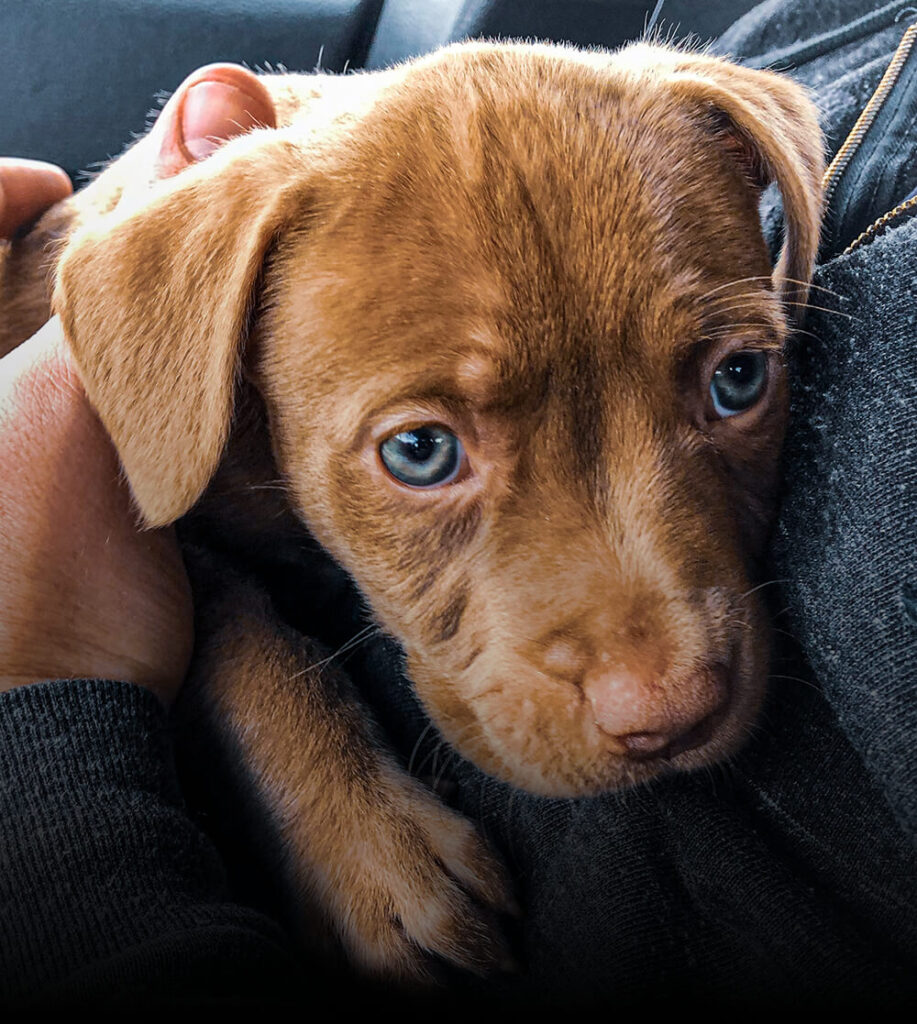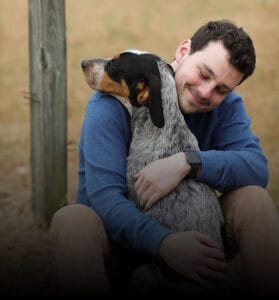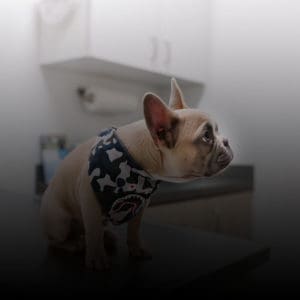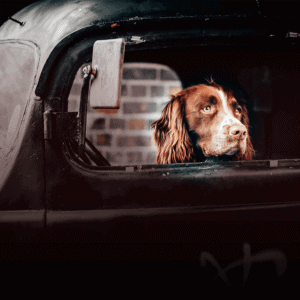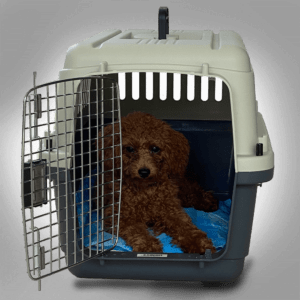Got a new puppy and don’t know where to start?
Fear not! Here’s our straightforward puppy care for beginners guide to get you on the right track.
Puppy Care For Beginners Guide
Puppy-proof your home and garden
The first step before welcoming a new puppy into your life is to make sure your home is as puppy friendly as possible.
To help you get started, here are seven easy-to-implement puppy-proofing tips for home and garden:
- Tidy away electrical cables or use anti-chew tape or spray.
- Block stairs and private rooms with a baby gate.
- Store human food out of reach – especially chocolate, which is poisonous for dogs.
- Keep rubbish bins locked or behind closed doors.
- Store medicines, cleaning products and valuables in a safe place.
- Escape-proof your back yard with fencing and gates.
- Remove any sharp objects or potentially toxic plants from the garden.
Stock up on the right supplies
Believe it or not, puppy care involves more than smothering a little pup with love (although it helps). In fact, puppies need some essential supplies to ensure they grow up to be happy and healthy – just like babies.
A good place to start when drafting a list of supplies is to consider what a puppy will need to survive, like food and drink. This means they will need bowls to eat and drink out of.
Most puppy experts recommend getting two easy-to-clean stainless steel bowls (one for food and one for water), and a non-slip mat to keep your floor clean.
Next on the supplies list should be puppy food to serve in the new bowl.
There are three types of dog food for puppies (moist, semi-moist and dry kibble), but it can be hard to know which one to choose.
Dry kibble is often the best choice for growing puppies because it has more meat protein, so it’s easier for puppies to digest. Plus, it’s good for their teeth, making it a win-win option.
Similarly, moist food is easy to digest, but it doesn’t have as many nutrients as dry kibble and it’s not as beneficial for puppy teeth.
Then there is semi-moist food in pre-packaged portions. This is a convenient option but usually the most expensive and also has higher levels of salt, sugar and preservatives, which are not good for a puppy.
Finally, you will need some grooming supplies for your puppy, such as a hair brush and nail clippers.
Puppy care experts recommend a rubber toothed brush for short haired dogs and a long bristle brush for long haired dogs.
For nail clippers, opt for stainless steel (like the food and drink bowls).
Set up a puppy bed
We all know how important it is to have a comfortable place to sleep, and it’s no different for dogs.
However, when searching for a bed, keep in mind that your puppy will grow into a full-size dog in the coming months, so make sure there is room for growth – especially for larger breeds.
Or, if you want to combine sleeping with some training, then consider getting a dog crate.
Crates are used to create boundaries within the home, to help your puppy become more independent and to provide a den-like space for your dog.
Some experts love dog crates while others hate them, so it makes sense to do some research before investing in a crate.
Find out more with Puppycare Central’s guide to the Pros and cons of crate training.
Get ready to exercise and play
Exercise and play are key elements of raising a puppy, but moderation is the key.
Why? Because too much exercise can cause damage to delicate puppy joints and muscles – especially in very young pups.
This is why experts recommend exercise and play in short bursts before gradually increasing the duration as your pup gets older.
The advice from PDSA, the UK’s leading vet charity, is that puppies should be exercised for five minutes per month of age, twice a day.
So a three-month-old puppy will need 15 minutes of exercise twice a day.
Train your pup
Puppies usually leave their mum to join their new home between eight and 10 weeks of age, which is the ideal time to start toilet training.
To get started, choose a designated area for your pup to do his or her business, preferably in a garden. Then start taking your puppy there once an hour.
Puppies should quickly learn where to go to the toilet during the day. But if your pup is prone to accidents at night, you can try using disposable puppy training pads (or potty pads) to absorb any mess.
Schedule a vet appointment
The first time you take your puppy to a vet will probably be for vaccinations.
This should be done within the first three weeks of welcoming a new puppy into your home, typically between eight and 10 weeks of age.
Puppies then require a booster vaccination at either six or 12 months.
Here’s what puppy vaccinations protect against (courtesy of the UK’s RSPCA):
- Canine distemper
- Canine parvovirus
- Kennel cough
- Leptospirosis
- Parainfluenza
Plus, once your pup has been vaccinated, you’ll be able to go for walks and socialise with other animals, safe in the knowledge your precious puppy will be protected.
Find out more about protecting your pup with our guide to puppy vaccinations.

